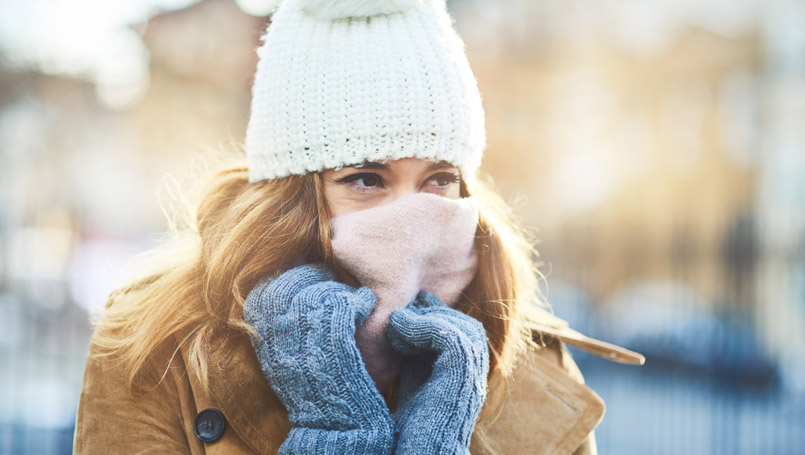
The recent Polar Vortex in Michigan has caused many safety concerns - mainly frostbite and hypothermia. Bundling up and avoiding prolonged time outdoors helps your extremities, but can extremely cold temperatures also be dangerous to your eyes?
“Cold winter winds cause moisture in the eyes to evaporate and the eyes tear excessively to compensate,” explained Andrea Nielsen, O.D., Beaumont Eye Institute. “On average, the eyes blink 15 - 20 times per minute, distributing the tears and keeping the surface of the eye moist helping to protect the cornea. Warm body temperature also helps protect the eyes from the cold.”
In addition to overall exposure to the cold, reflections off snow can significantly increase the UV exposure and cause light sensitivity.
“Too much UV exposure can cause inflammation of the cornea, a condition called keratitis,” said Dr. Nielsen. “Glasses, sunglasses or goggles with UV coatings protect the eyes and the skin surrounding the eyes from UV and shield the eyes from the wind and frigid air.”
Not all winter eye issues happen outdoors. Cold weather means turning up the heat, which makes the air dry and can contribute to dry eyes. Dr. Nielsen recommends using a humidifier in the home or office can help increase moisture in the air.
Dr. Nielsen added, “Drinking plenty of water and using lubrication drops can reduce the symptoms of dry eyes. It might seem obvious, but direct the heat away from your face while driving to help prevent dry eyes.”
If the cold weather has you cooped up indoors for an extended period of time and you’ve spent your day binge-watching Netflix, your eyes can tire from eyestrain. Fortunately, eyestrain can be minimized with a helpful trick called the “20/20/20 Rule” - for every 20 minutes watching, take a 20 second break and look 20 feet away.
